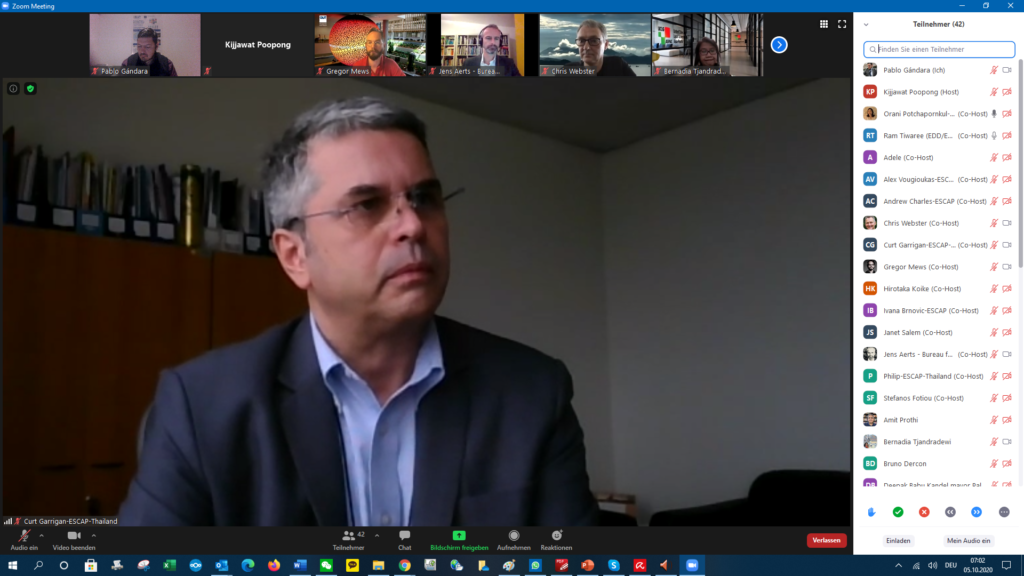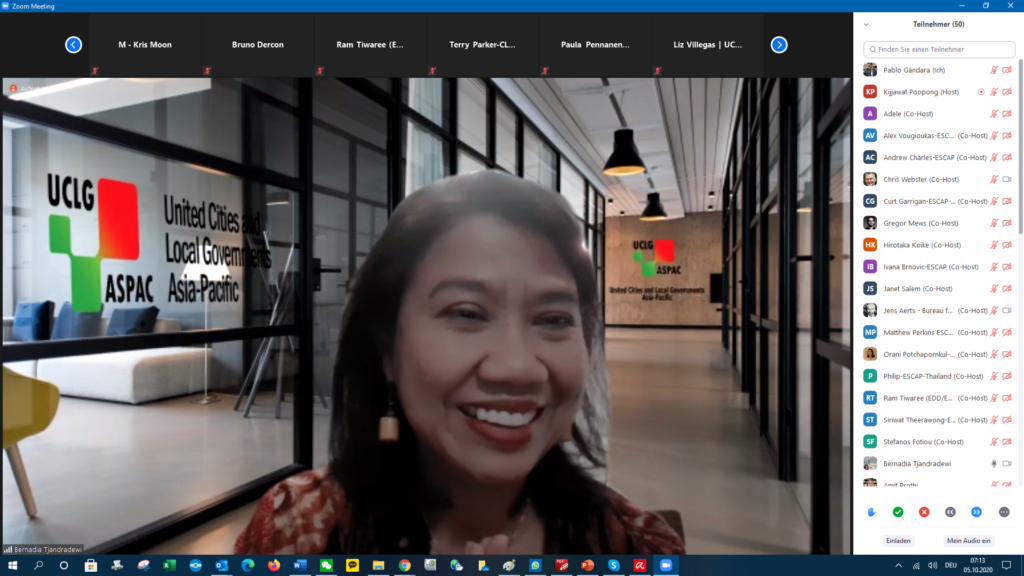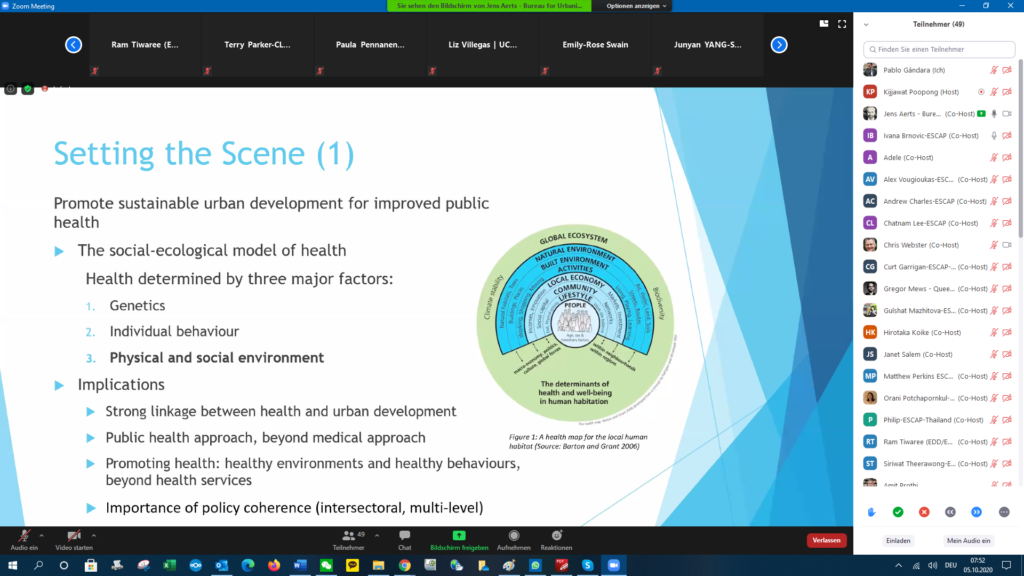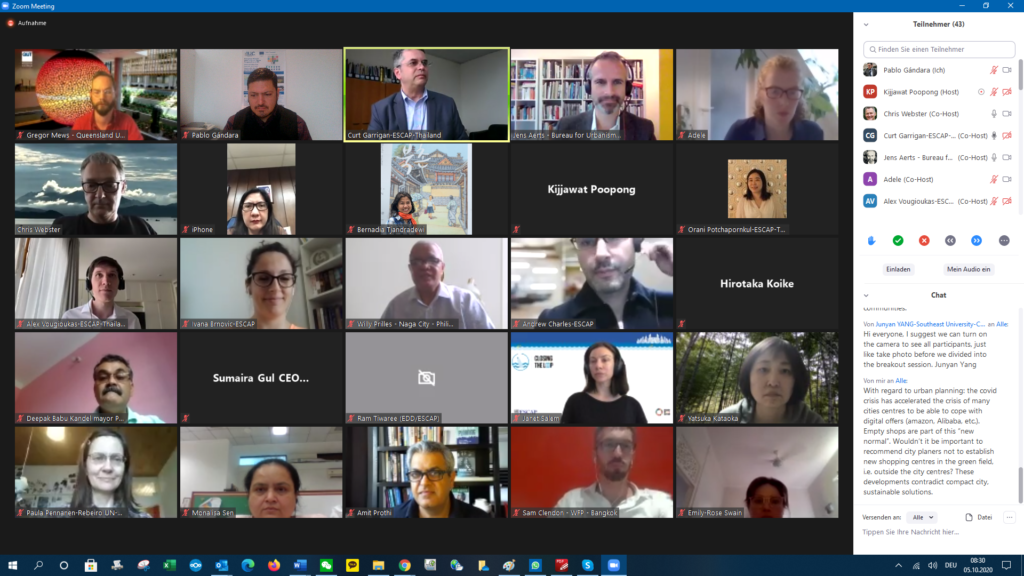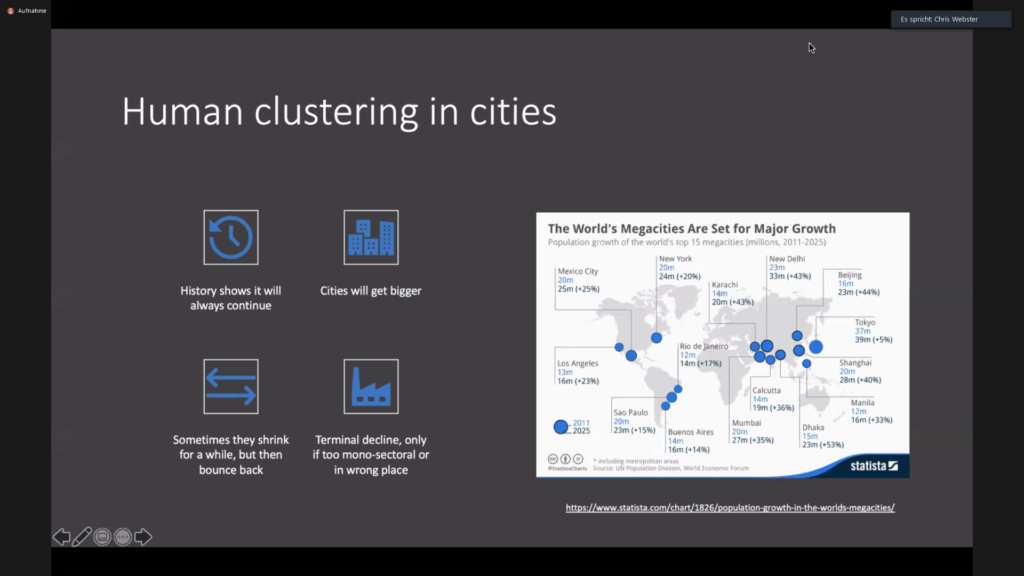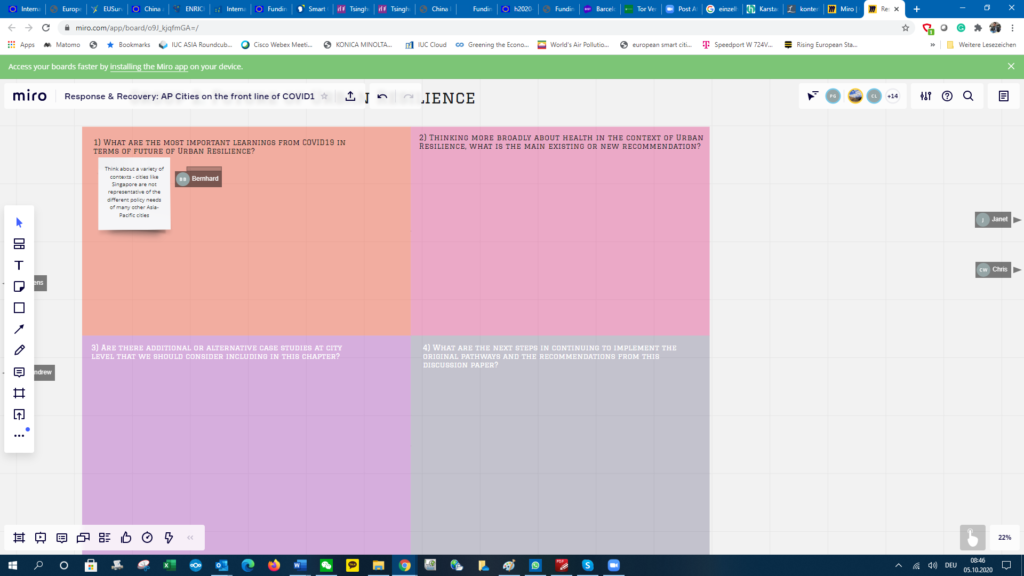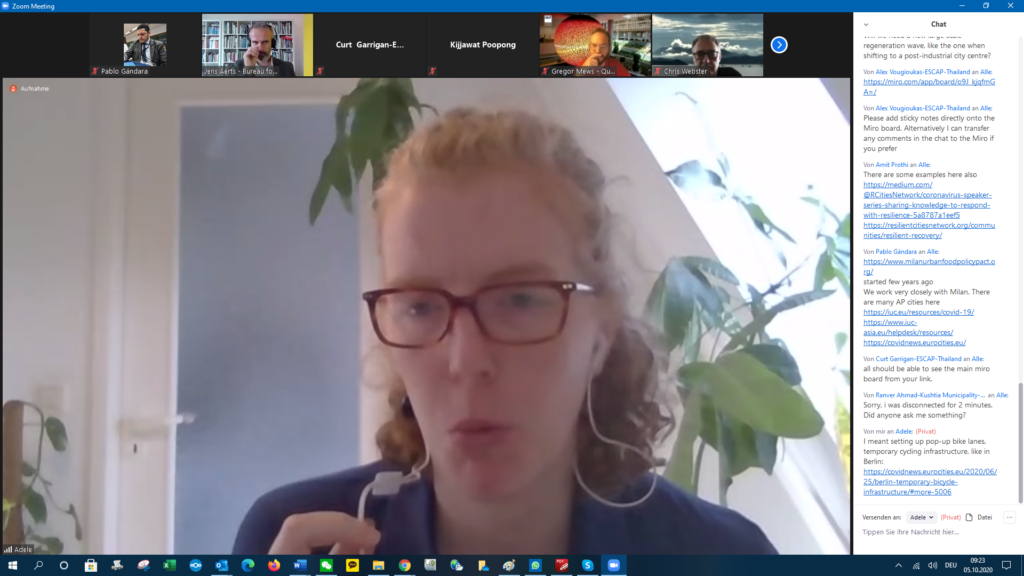The IUC team participated in the experts meeting that aimed to identify and discuss sustainable approaches to support Asia-Pacific cities to build back better from COVID-19. The meeting featured around 50 participants from Asia-Pacific states, cities, stakeholders, development partners and experts. The interactive discussion provided inputs to the development of a new ESCAP discussion paper “The Future of Asian and Pacific Cities in the post-COVID19 era”, which was presented at the meeting. The discussion paper builds on the four thematic priorities and fifteen development pathways from ESCAP’s flagship report “The Future of Asian and Pacific Cities Report 2019” which was launched at the seventh session of the Asia-Pacific Urban Forum (APUF7). Through the IUC project, the European Union contributed substantially to the elaboration of this report.
Keynotes were held by ESCAP Environment Director Stefanos Fotiou, who thanked the EU for supporting the 2019 Cities Report. Bernadia Tjandradewi from UCLG ASPAC mentioned the importance of building partnerships with the civil society, improving intersectoral and multi-level governance, decentralising tasks from national / provincial to the local level and achieving a better integration of rural areas in city planning (integrated territorial development). Prof. Christopher Webster from the University of Hong Kong explained that cities will continue to grow and will become even denser. The only way to make cities safer against pandemics are infrastructure and technology (incl. infection tracing).
The working paper was then presented by lead author Jens Aerts. He mentioned that COVID-19 and cities is not about density, but about urban equity (poverty, services, environment, social protection). During the plenary discussion, participants focused on the role of education and literacy for increasing resilience (chances opened by virtual tools). Also, the revitalisation of city centres after the crisis and the need for banning greenfield shopping areas outside the city centre was discussed.
Breakout sessions
- Pathway 1 – Urban and Territorial Planning: A lesson from the COVID crisis is to ensure supportive infrastructure/environment when developing new, high-density areas – including fast response measures. Cities should explicitly integrate health targets in sustainable urban and territorial planning processes on national and subnational levels. Communities should be involved to produce guidelines for placemaking and public space programming for sustainable recovery. At the planning level, specific urban regeneration and growth strategies should be identified. Further details are here.
- Pathway 2 – Urban Resilience: The main takeaways of the COVID19 crisis while dealing with resilience were to improve healthy environments though regulations on new infrastructure developments, improve and decentralise access to health services in districts (strengthening first-response centres/family doctors models), develop special procedures for protecting vulnerable population groups and better-communicating risks with the population. The four pathways that had already been identified in the report were complemented with other elements like improving social equity, community engagement and improving data literacy. IUC ASIA provided further details of the case studies for the resilience chapter including Gwangju in Korea and Liuzhou in China. Further details are here.
- Pathway 3 – Smart and Inclusive Cities: Lessons from the COVID crisis include the role of technology to aid connectivity with the public, providing critical basic service delivery and reducing infectious disease transmission risk. Disaggregated, high-quality, and inclusive data has proved essential to governments successfully monitoring, controlling, and ultimately reducing community transmission, infection, and untimely death. Big data has helped to: a) understand more about the risk factors (e.g. air pollution) for COVID-19, b) identify vulnerable populations (e.g. the elderly, certain occupations), and c) predicting future hotspots by overlaying data sets onto city maps. According to the slides and the paper, health communications can only succeed with ample transparency, reliability, and trust in government (including cybersecurity concerns). A strong broadband connectivity for all Asia Pacific cities is crucial to meeting the SDGs. Further details are here.
- Pathway 4 – Urban Financing. Raul participated here and here is his summary: The main takeaways of the COVID19 lessons for the future of urban finance are the need to build resilience to unknown impacts, diversify the economy and accumulate enough reserves for contingencies, in order to mitigate reliance on intergovernmental transfers. The working group agreed that investing in new (or upgrading) health infrastructure, promote rapid access to health and protective equipment as well as addressing the need for housing solutions are valid recommendations to take into consideration in the context of health and urban financing. As next steps, the working group recommended to find ways to strategize the sustainable flow of urban finance (e.g. using public land as income generator). IUC ASIA contributed to this working group and suggested to look into the practices of Petaling Jaya in Malaysia as a potential case study for the chapter on urban financing. Further details are here.
Next steps: The policy recommendations from this meeting will also inform member States’ deliberations during ESCAP’s sixth Session of the Committee on Environment and Development (https://www.unescap.org/intergovernmental-meetings/committee-environment-and-development-sixth-session) which will be held from 9 to 10 December 2020 and contribute to the regional commemoration of World Habitat Day.
All presentations are available here: https://www.unescap.org/events/virtual-expert-group-meeting-topic-response-and-recovery-asia-pacific-cities-front-lines
Impressions



